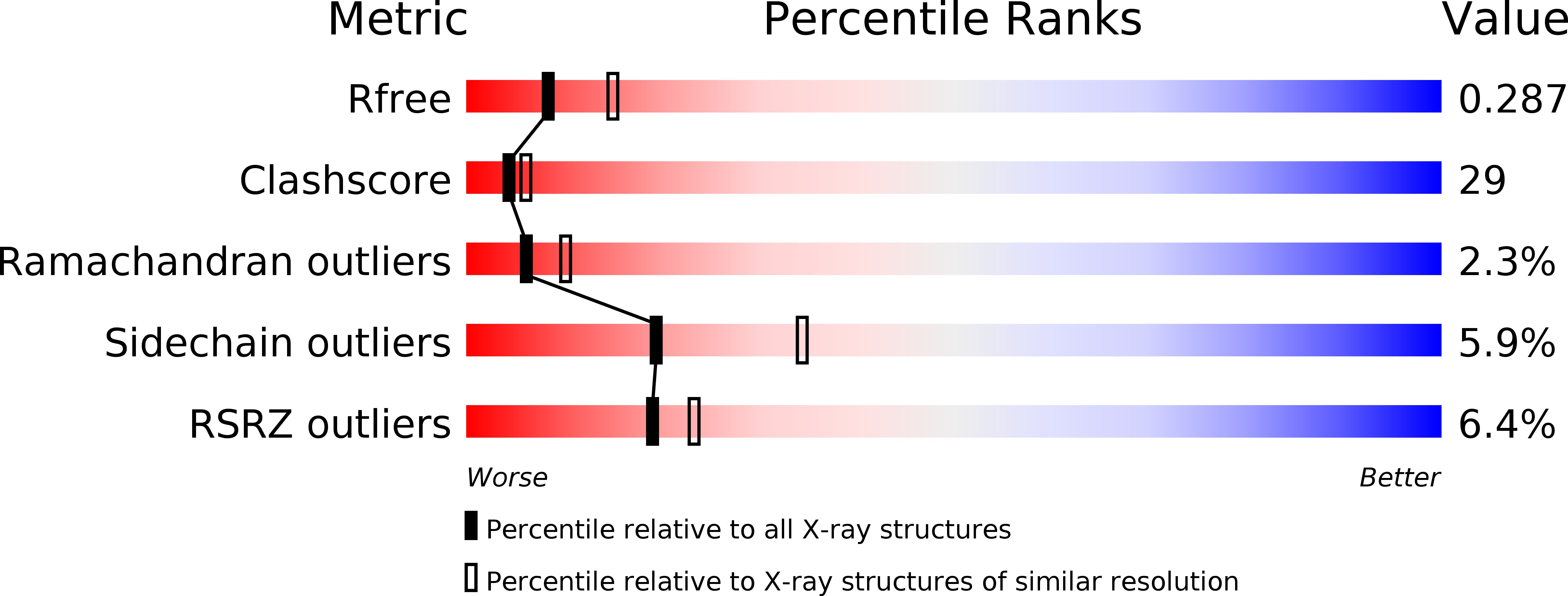X-Ray Crystal Structure of Ornithine Acetyltransferase from the Clavulanic Acid Biosynthesis Gene Cluster.
Elkins, J.M., Kershaw, N.J., Schofield, C.J.(2005) Biochem J 385: 565
- PubMed: 15352873
- DOI: https://doi.org/10.1042/BJ20040814
- Primary Citation of Related Structures:
1VZ6, 1VZ7, 1VZ8 - PubMed Abstract:
The orf6 gene from the clavulanic acid biosynthesis gene cluster encodes an OAT (ornithine acetyltransferase). Similar to other OATs the enzyme has been shown to catalyse the reversible transfer of an acetyl group from N-acetylornithine to glutamate. OATs are Ntn (N-terminal nucleophile) enzymes, but are distinct from the better-characterized Ntn hydrolase enzymes as they catalyse acetyl transfer rather than a hydrolysis reaction. In the present study, we describe the X-ray crystal structure of the OAT, corresponding to the orf6 gene product, to 2.8 A (1 A=0.1 nm) resolution. The larger domain of the structure consists of an alphabetabetaalpha sandwich as in the structures of Ntn hydrolase enzymes. However, differences in the connectivity reveal that OATs belong to a structural family different from that of other structurally characterized Ntn enzymes, with one exception: unexpectedly, the alphabetabetaalpha sandwich of ORF6 (where ORF stands for open reading frame) displays the same fold as an DmpA (L-aminopeptidase D-ala-esterase/amidase from Ochrobactrum anthropi), and so the OATs and DmpA form a new structural subfamily of Ntn enzymes. The structure reveals an alpha2beta2-heterotetrameric oligomerization state in which the intermolecular interface partly defines the active site. Models of the enzyme-substrate complexes suggest a probable oxyanion stabilization mechanism as well as providing insight into how the enzyme binds its two differently charged substrates.
Organizational Affiliation:
Department of Chemistry, Chemistry Research Laboratory, University of Oxford, Mansfield Road, Oxford OX1 3TA, UK.
















